Before the Pyramids: The Origins of Egyptian Civilization
Oriental Institute Museum displays some of Egypt's earliest artifacts
Before The Pyramids Audiotour (9 audio tour files in one zip file)
Update December 6, 2011: The statue of King Khasekhem and the Battlefield Palette have been removed from the exhibit and returned to the Ashmolean Museum, Oxford.
Visitors will have a chance to get a rare look at beautifully made statues, vessels, figurines, and other artifacts from the dawn of the Egyptian culture at a special exhibition at the Oriental Institute Museum at the University of Chicago.
"Before the Pyramids: The Origins of Egyptian Civilization" will run from March 29 to December 31, 2011, at the museum, 1155 East 58th Street. The museum holds the Chicago area's largest collection of Egyptian art and artifacts as well as galleries devoted to the other cultures of the ancient Middle East.

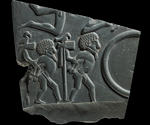
The new exhibition shows that the most fundamental aspects of ancient Egyptian civilization — architecture, hieroglyphic writing, a belief in the afterlife, and allegiance to a semi-divine king — can be traced to Egypt's Predynastic and Early Dynastic eras more than 1,000 years before the pyramids were built.
"It has been decades since there was an exhibit devoted to earliest Egypt," said Gil Stein, director of the Oriental Institute. "By showing us the origins of the Egyptian state, this gem of an exhibit only enhances our sense of wonder at the later achievements of this civilization when it reached its zenith."
The exhibit presents 140 artifacts that date to roughly 4000-2650 BC. It shows how the culture and events of that time gave birth to one of the greatest ancient civilizations. Most of the objects come from the permanent collection of the Oriental Institute.
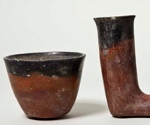

They include elegant pottery painted with enigmatic scenes of multi-oared boats with emblems of gods, spectacular carved stone vessels of colored stone, ritual knives, figurines left by worshippers at the earliest temples, stone tools, weapons, and examples of the earliest writing from the Nile Valley.
"When people think about the earliest periods of Egyptian history, they usually think of the pyramids," said Emily Teeter, exhibit curator. "This exhibit reveals the richness of Egyptian culture centuries before they were built. It is amazing to walk through our Egyptian gallery that contains artifacts from later periods, and see how much the later eras owe to the Early Dynastic period."
A highlight of the exhibit is the section on the development of kingship. Two masterworks of the Early Dynastic period are on special loan to the Oriental Institute from the Ashmolean Museum of Oxford University. One is a statue of King Khasekhem, who reigned about 2685 BC.
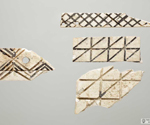
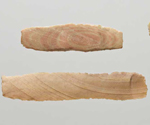
Never before shown in the United States, the statue portrays the king seated on a throne, wrapped in a ritual costume associated with the renewal of his power. The base of the statue is engraved with a text that claims that he defeated 47,209 northern enemies.
The second object on loan is the Battlefield Palette, a fragment of a large stone whose form developed from slabs used to grind cosmetics. It is carved with scenes that show enemies being bound and defeated by animals who represent the Egyptian king.
Other objects in the exhibit were excavated from the tombs of the first kings, who were buried at Abydos in southern Egypt. A mound over the burial chambers of these tombs is probably the inspiration for a pyramid over later royal tombs. The fragments of ivory inlays, furniture legs in the form of bull hooves, images of the king incised in ivory, game pieces, and beautifully carved stone vessels attest to the power and wealth of these kings.
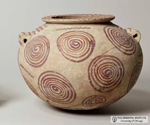
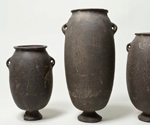
Three tombstones in the show came from the graves of courtiers, hundreds of whom were buried next to their king. Many scholars believe that they were sacrificed to follow their lords to the afterlife. Most of the material in the exhibit has not been on view for over a decade.
An interactive kiosk in the show features an interview with Günter Dreyer, the excavator of the tombs of the earliest kings at Abydos, and footage showing modern craftsmen replicating objects in the exhibit using ancient tools and techniques.
A companion catalog contains essays by fifteen preeminent scholars of the Predynastic and Early Dynastic periods. The richly illustrated book gives the most up-to-date information about the era and the broadest look at the material culture of the time.
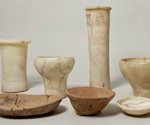
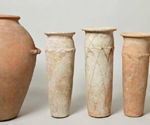
Programming in conjunction with the exhibit includes:
- Curator-led tours of the exhibit are scheduled for Wednesday April 6 and Wednesday May 11, both at 12:15 pm.
- On Saturday May 21 from 1:30 to 4:00 pm, the Oriental Institute will present "The Scorpion King" a premiere theater screening of a National Geographic film on the earliest kings of Egypt. Renowned archaeologists, Dr. Günter Dreyer of the German Archaeological Institute in Cairo and director of excavations of the royal tombs at Abydos and Renée Friedman of the British Museum and director of excavations at Hierakonpolis, will comment on the film and answer questions from the audience. For further information on programs, contact the Oriental Institute at (773) 702 9507 or on the Web at oi.uchicago.edu
This exhibit is supported by Tom and Linda Heagy, by members of the Oriental Institute, and by grants from the Antiquities Endowment Fund of the American Research Center in Egypt and Exelon.

